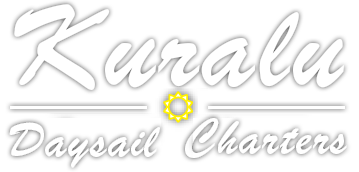Cooper Island
Cooper Island is a small, unspoiled island that lies about five miles across the Sir Francis Drake Channel from Tortola. It is one of the BVI’s little gems, with a protected anchorage, a white sand beach, a resort and restaurant, a superb snorkeling location with wreck diving nearby and an interesting shoreline for kayaking and exploring. Cooper Island Beach Club is a small resort on Manchioneel Bay on the north west corner of the Island. Apart from the Beach Club and its staff, there is one local family, five holiday houses and lots of goats on the island.
It also has a little known but interesting history. The name of the island is somewhat enigmatic but there are two theories: it was named for its first settlers, a Dutch family named Koop; or it was named Cooper for the coopers that came to collect the white cedar used for making rum barrels.
Cooper Island’s superb snorkeling site is in the waters around Cistern Point and the rock named Little Carvel Rock. On the shore adjacent to the rock are the remnants of a cistern once used for watering livestock and plantation land. A plantation existed here back in the 1800s and possibly earlier. On the summit of the promontory lies the ruin of a fort; now the base of a residence. The walls are some three feet thick in order to resist cannon balls fired from potential enemy ships. In the plantation era there were no police and no military to protect the citizenry, especially on an outer island like Cooper. In the event of a pirate attack or Spanish incursion it was every man for himself. Self protection was paramount.
Salt Island
Salt Island is located about 4.7 miles south east of Road Town. It is named after its 3 salt ponds, that were once an important resource providing a traditional source of seasoning for local islands and passing ships.
Salt Island is most notable for the wreck of the Royal Mail packet steamer, RMS Rhone that sank in a hurricane on October 29, 1867 with the loss of most of the crew. Many of the bodies were buried in a mass gave on Salt Island which is a short walk from the main beach and can be easily seen today. A wide circle of stones is laid upon the grave.
The wreck of the Rhone is the Caribbean’s most spectacular and perfectly preserved wreck and as such is a popular dive site. Some of the underwater scenes in film “The Deep” were filmed in and around the wreck. The Wreck of the Rhone is divided into two halves: The Bow at 60-90′ where divers can swim inside the ship and marvel at the many varieties of fish including Angel Fish, Parrot Fish, Snappers, Grunts and Blue Tang; the other half (15-60′) where the foremast and crows nest as well as the boilers, wrenches and winch can all be seen. The varieties of fish here include Barracuda, Stingrays including the Eagle Ray and Turtles.
Tributes of Salt
The harvesting of salt was once an annual tradition on Salt Island going back to the days of Queen Victoria in 1867. It became customary for the Governor of the Virgin Islands to send one pound of salt to the Monarch on the Queen’s birthday. The tradition subsequently fell away. However, in 2015, Governor John Duncan decided to renew the tradition. For the first time in many years, a pound of salt from Salt Island was presented to the Sovereign. The salt had been harvested specially for the occasion by Calvin “Jandy” Smith of East End, Tortola. At the annual parade celebrating the Sovereign’s official birthday on 13 June 2015, the Governor announced that the previous tradition of presenting a pound of salt to the Sovereign would be renewed as a tradition in future years.
